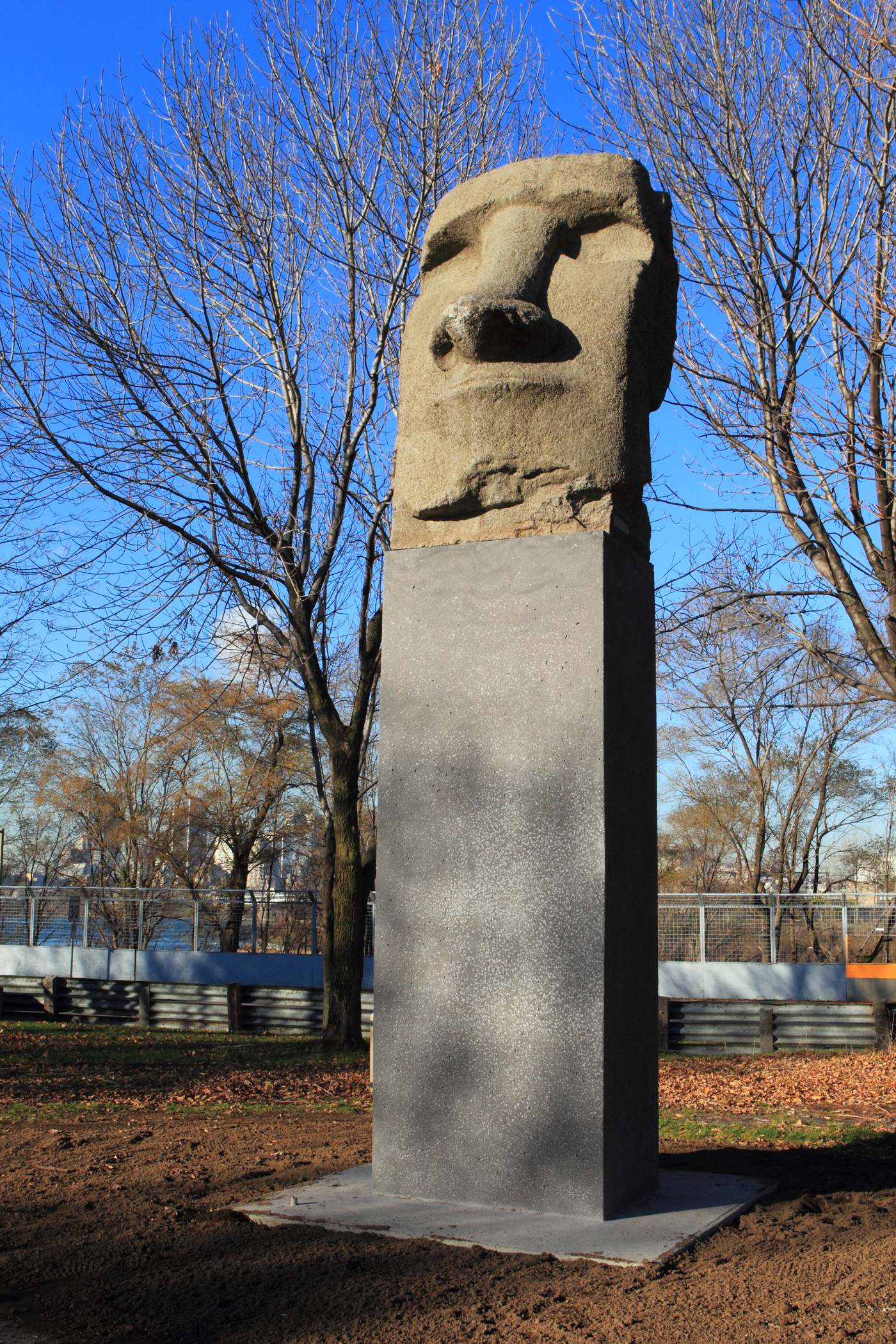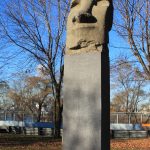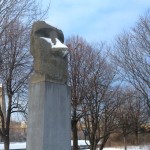


Artwork description
Tête Moaï is an authentic replica cast from a mould from one of the original heads found on Easter Island. This island off Chili, isolated in the southeastern Pacific Ocean, also known as Rapa Nui, is famous for its volcanic rock giants, some of which rise ten metres. The head from which the mould for this replica was cast broke off from its body in a tsunami in 1960 and is about 2.5 metres tall.
In 1968, the archaeological site was threatened by a project to construct a runway. The International Fund for Monuments decided to alert public opinion by erecting one of the Moaï heads in front of the Seagram Building in New York City in order to raise awareness about the need to preserve these ancient indigenous sculptures. The sensitization initiative met its object and the construction project was cancelled. Lippincott Inc., an american company specializing in the manufacture, reproduction and installation of large-format public sculptures took advantage of the situation by signing a contract with Chilean authorities to create full-scale reproductions of the Head. The company received permission to create as many as 100 replicas, but in the end only created 11.
In 1970, one of them was on view in the “Strange, Strange World” pavilion, at Man and His World in Parc Jean-Drapeau. It was acquired by Montréal’s municipal administration in 1973. In 2010, Tête Moaï was exhibited in front of Pointe-à-Callière, Musée d’archéologie et d’histoire de Montréal, as part of its exhibition on Easter Island, and Rapa Nui history and culture.


